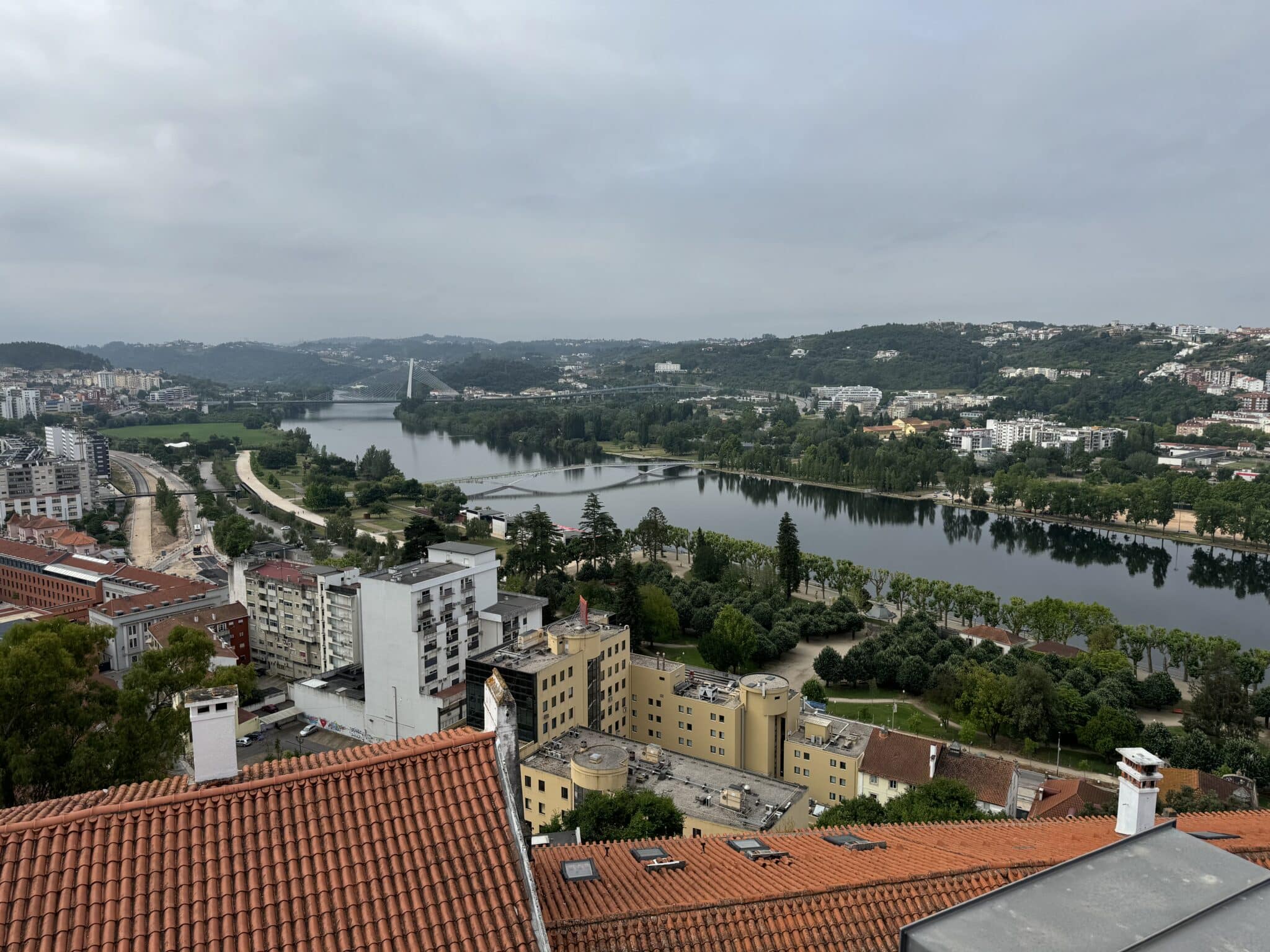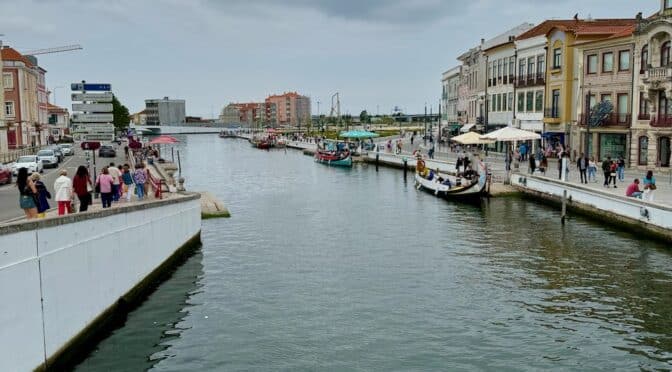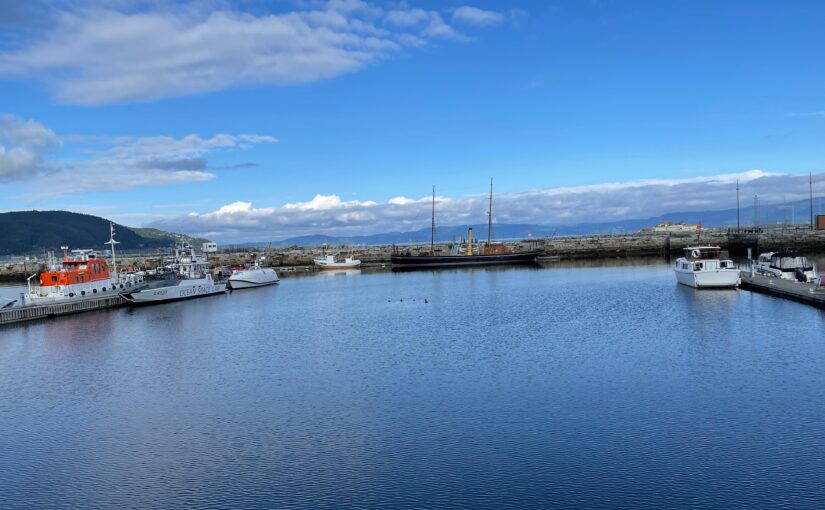by Nick Taylor and Barbara Nevins Taylor
We left Porto reluctantly, but we were leaving from Lisbon in two days and still had more of Portugal to see. We headed to “the City of Knowledge,” as Coimbra is known because it’s home to a university that’s one of the oldest in the world. The University of Coimbra was founded in Lisbon in 1290, just a hundred years after Portugal took shape. It moved to Coimbra in 1308, and after a couple centuries of shuttling back and forth settled down in Coimbra in 1537.
Coimbra was an hour and a half south and a little east of Porto on the A1 highway. As the city’s buildings fell away behind us and we drove through the countryside, we passed stands of naked roadside trees that towered above what looked like healthy growth below.

We learned that the Xylella bacteria spread by sap-feeding insects had killed a lot of trees in Europe. Portugal was also extremely dry, and that killed trees as well.
A little over halfway to Coimbra, we jogged toward the coast and stopped to stretch our legs in Aveiro, the so-called Little Venice of Portugal. It’s not exactly Venice, but it borders a large lagoon, the Ria de Aveiro, that feeds a network of canals. Tourists flock to them for sightseeing rides in colorful barcos moliceiros, boats once used to harvest seaweed.
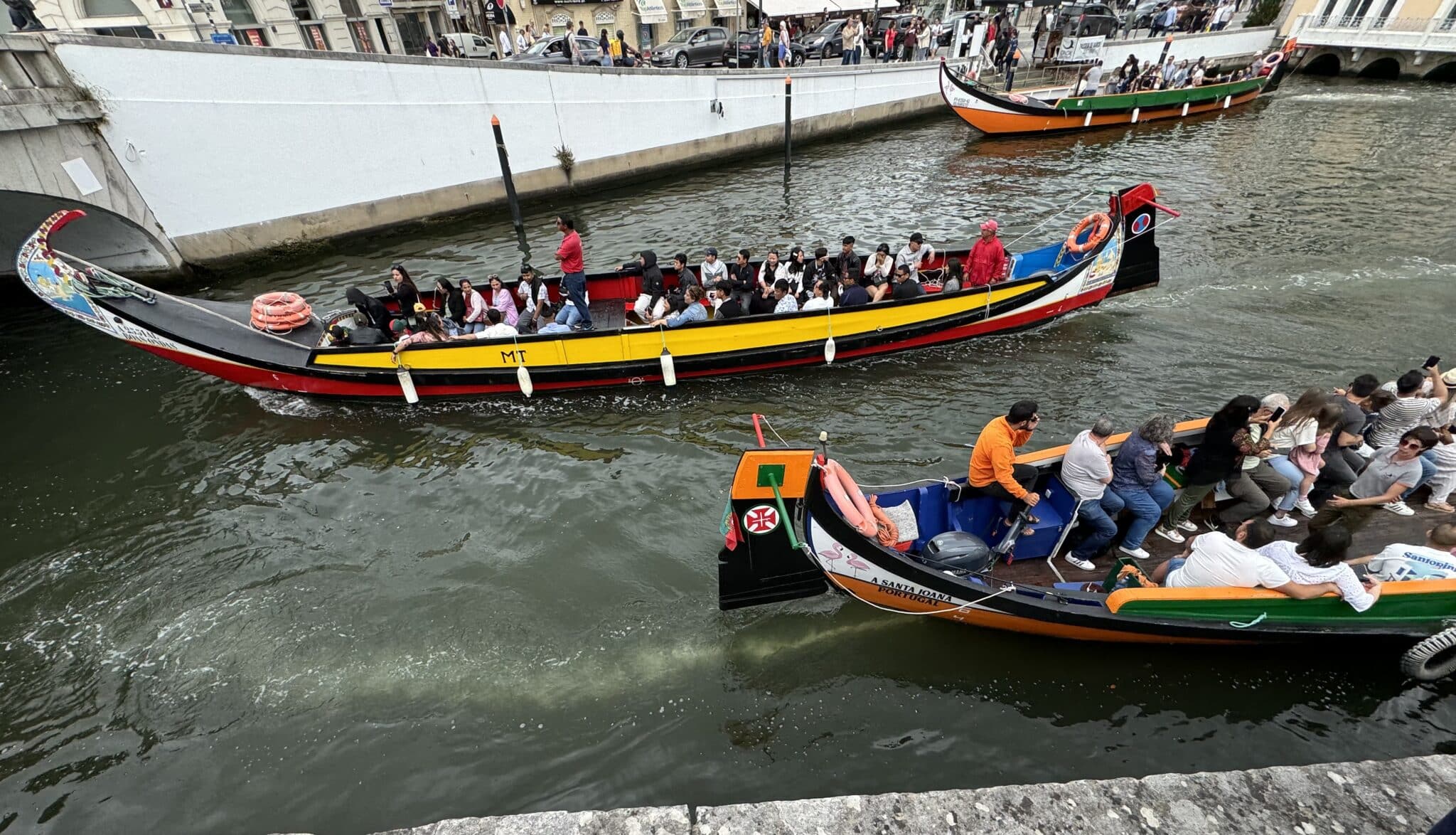
We found a parking lot and started toward the canal. But as we crossed a large square, the Praça de Pombal, we came upon what appeared to be a modest church.
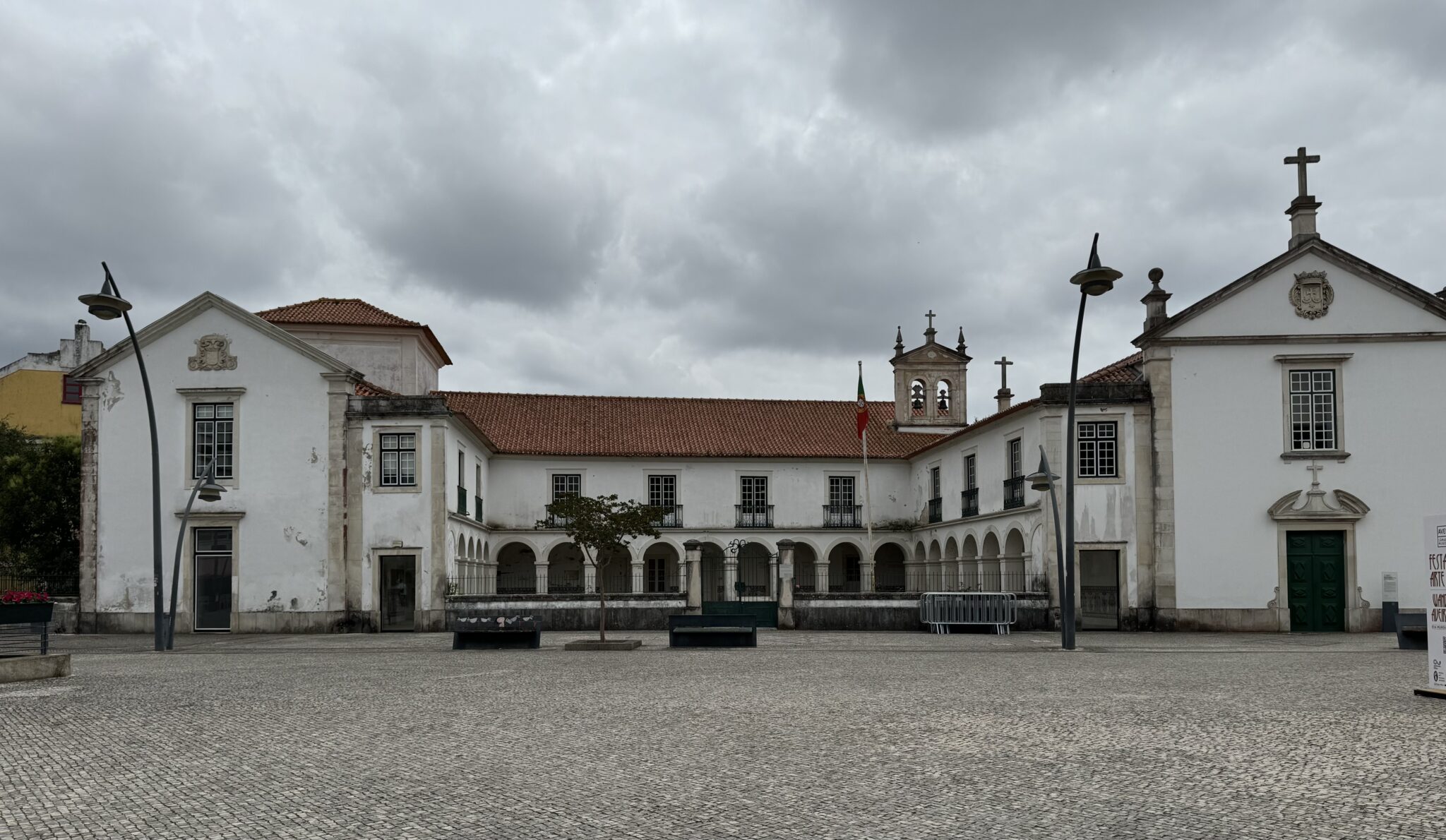
Something, we’re not quite sure what, made us stop. We opened the door and what we saw took our breath away. The beauty that surrounded us inspired reverence, and we learned it had been doing that to worshipers and later tourists for going on 300 years.
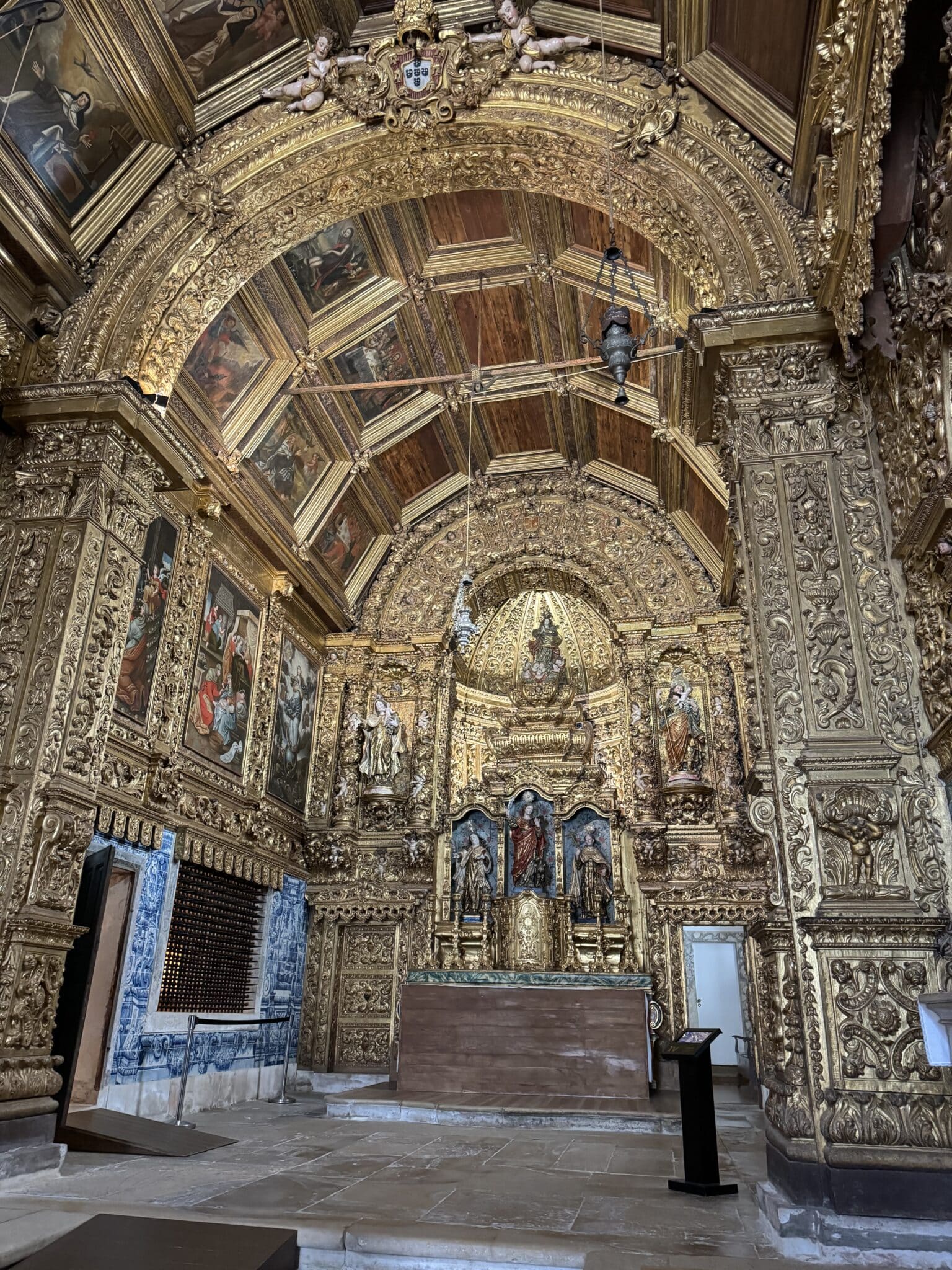
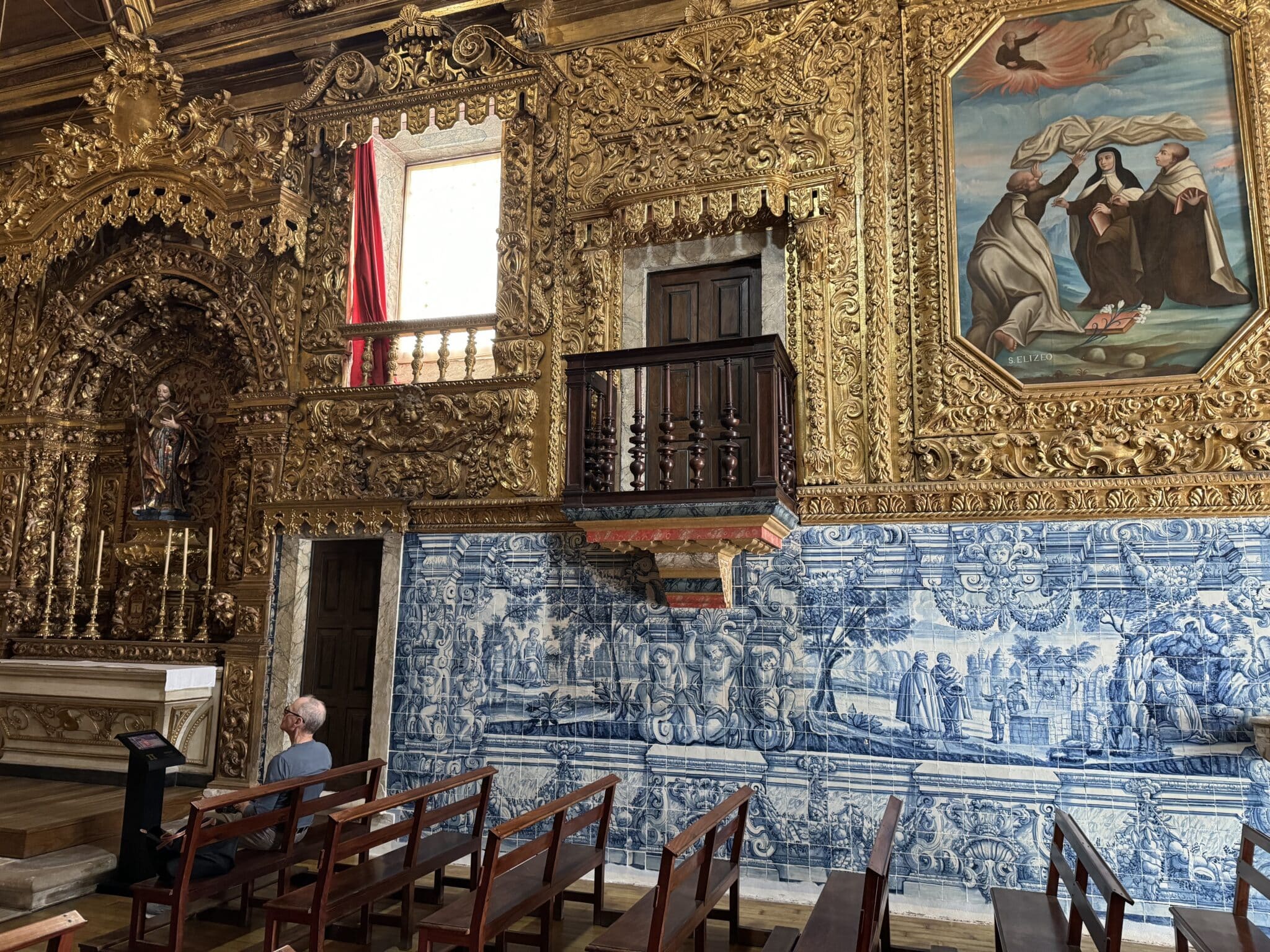
The story of the creation of the Igreja das Carmelitas is tortured, filled with royal and political intrigue between Portugal and Spain, while Spain held the reins. A religious site here goes back to 1613 when Carmelite monks stopped in Aveiro. Local nobility helped them establish a modest monastery in a series of houses. Then a woman came along who imagined adding a beautiful convent. Beatrix de Lara e Meneses had an unhappy marriage with a philandering Medici son, Pedro de Medici, and she left Spain for Aveiro, where she bought up property including, we were told, a large part of the Jewish ghetto.
The King of Spain withheld his permission for the building of the convent for a long time and in a letter, she joked grimly that she might die waiting for “the post.” Permission finally came and while she made clear in her 1648 will that she left everything to this church and the convent, the credit for building the gorgeous church went to the 4th Duke of Aveiro, listed as the founder. He obtained his title after the King of Spain accused the previous noble family of treason and stripped them of their titles.
If you followed all that, maybe a Netflix series, the complex was fully completed in 1738. More recently, in another twist to its tangled history, what was the convent’s cloister became home to Aveiro’s police department.
After basking in its beauty, we moved on from the church and followed the downhill street to the canal.
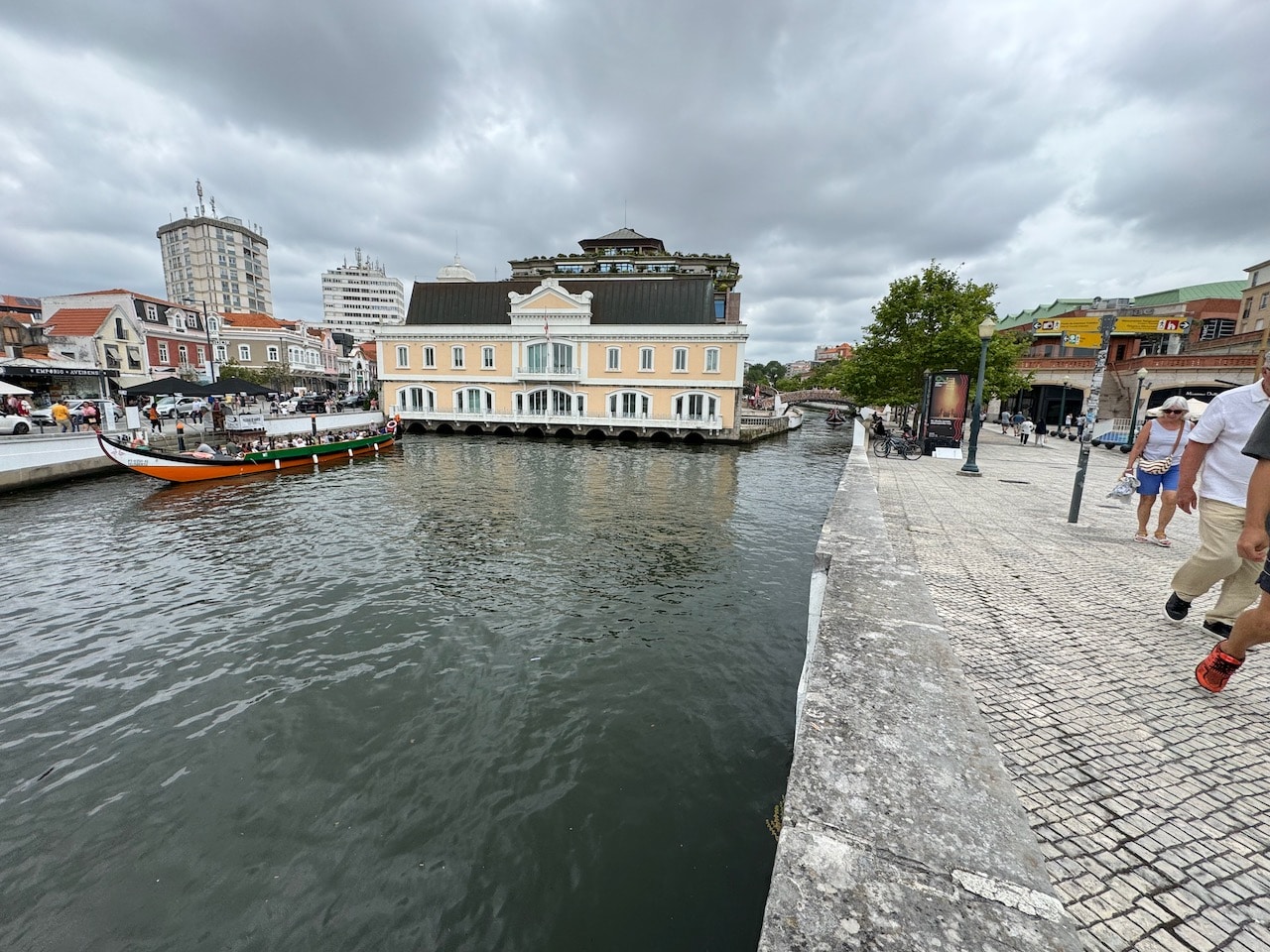
For some, Aveiro is a destination worth an overnight stay, but we had a reservation in Coimbra. Half an hour later, we found ourselves in the small city that mirrored many Portuguese hill towns with medieval roots. Its narrow, almost alley-like streets rose to high points, surrounded by stone walls that were hard to scale and easy to defend.
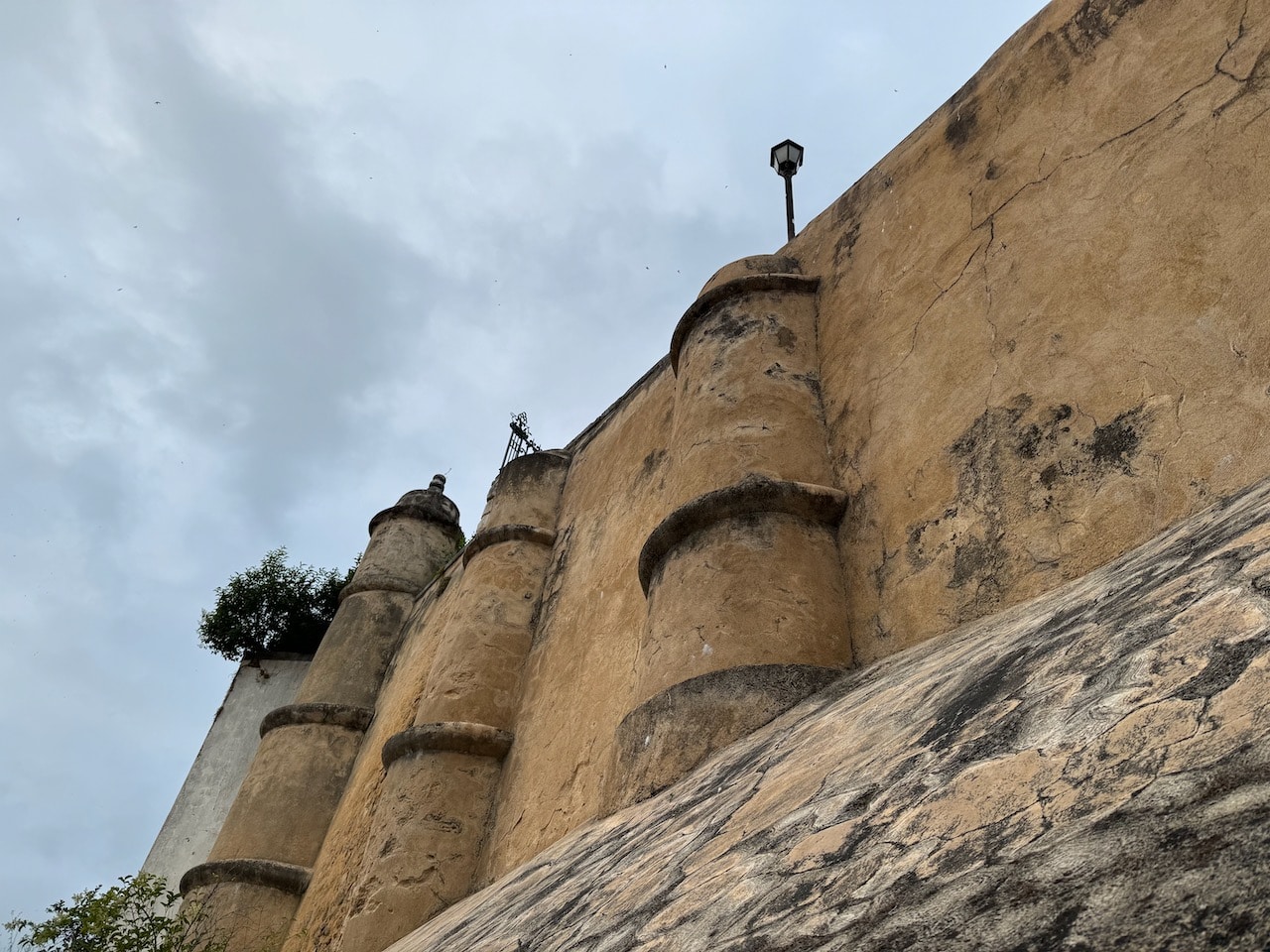
We let the GPS guide us. Nick drove higher and higher around hairpin turns on cobbled streets. We were at nosebleed heights when GPS told us to turn right, but Nick was convinced there was no street, just an alley. So we went down again, started over, and ended up at the same place.
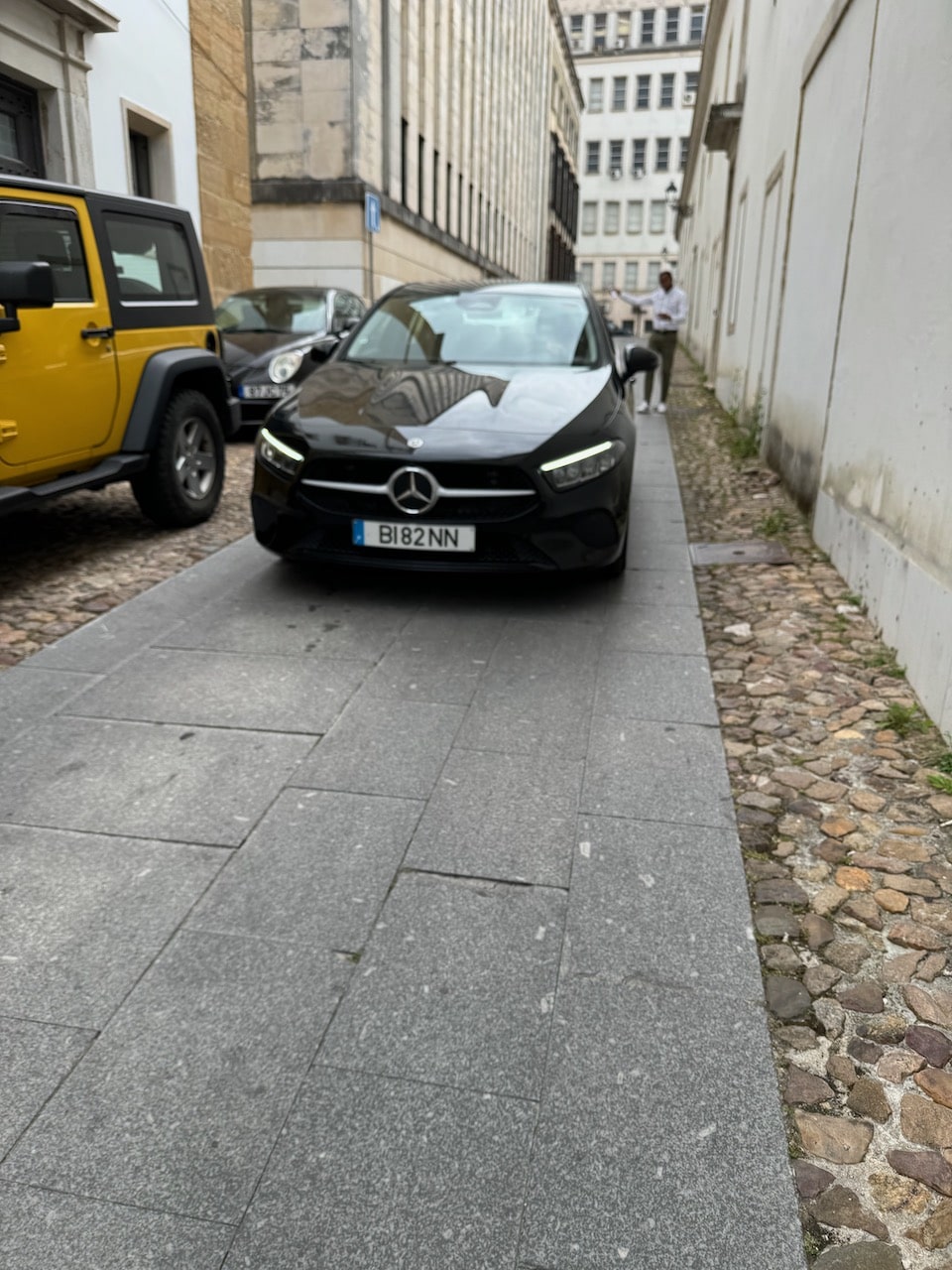
This time he turned into the narrow Rua José Falcão, which was walled on one side and flanked on the other by a line of parked cars huddled against another wall. Now Ms. GPS announced that our destination was on the left. We found the Sapientia Boutique Hotel nestled below street level at the far end. And believe it or not there was one — one — parking space along the wall.
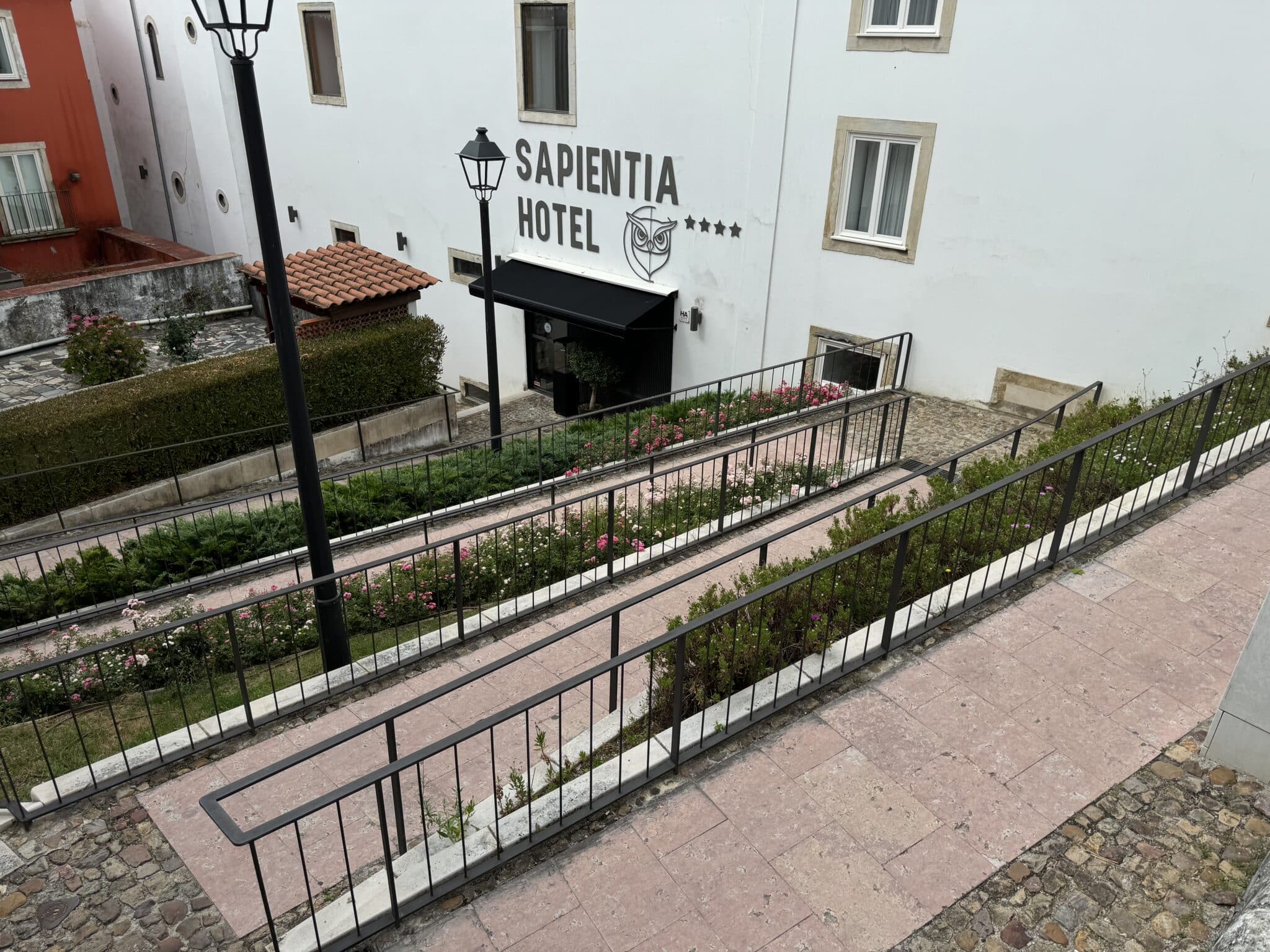
The privately-owned hotel seemed part of the university compound, but was a little world of its own with a small restaurant and garden. Our fifth floor room faced out onto the town and the river.
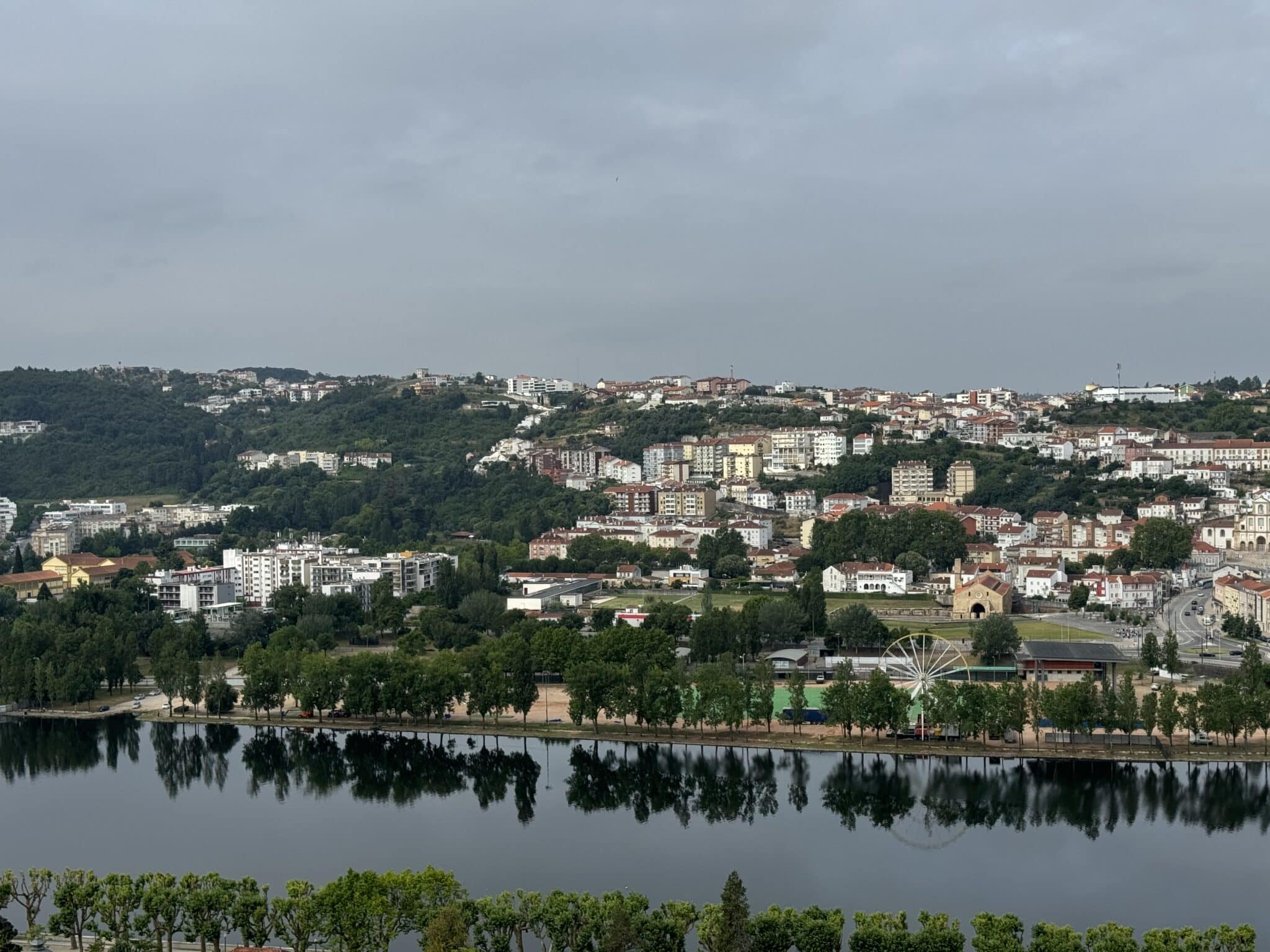
After we got settled, we walked up the hill to visit the ancient campus and its magnificent botanical garden that was in full flower in June.
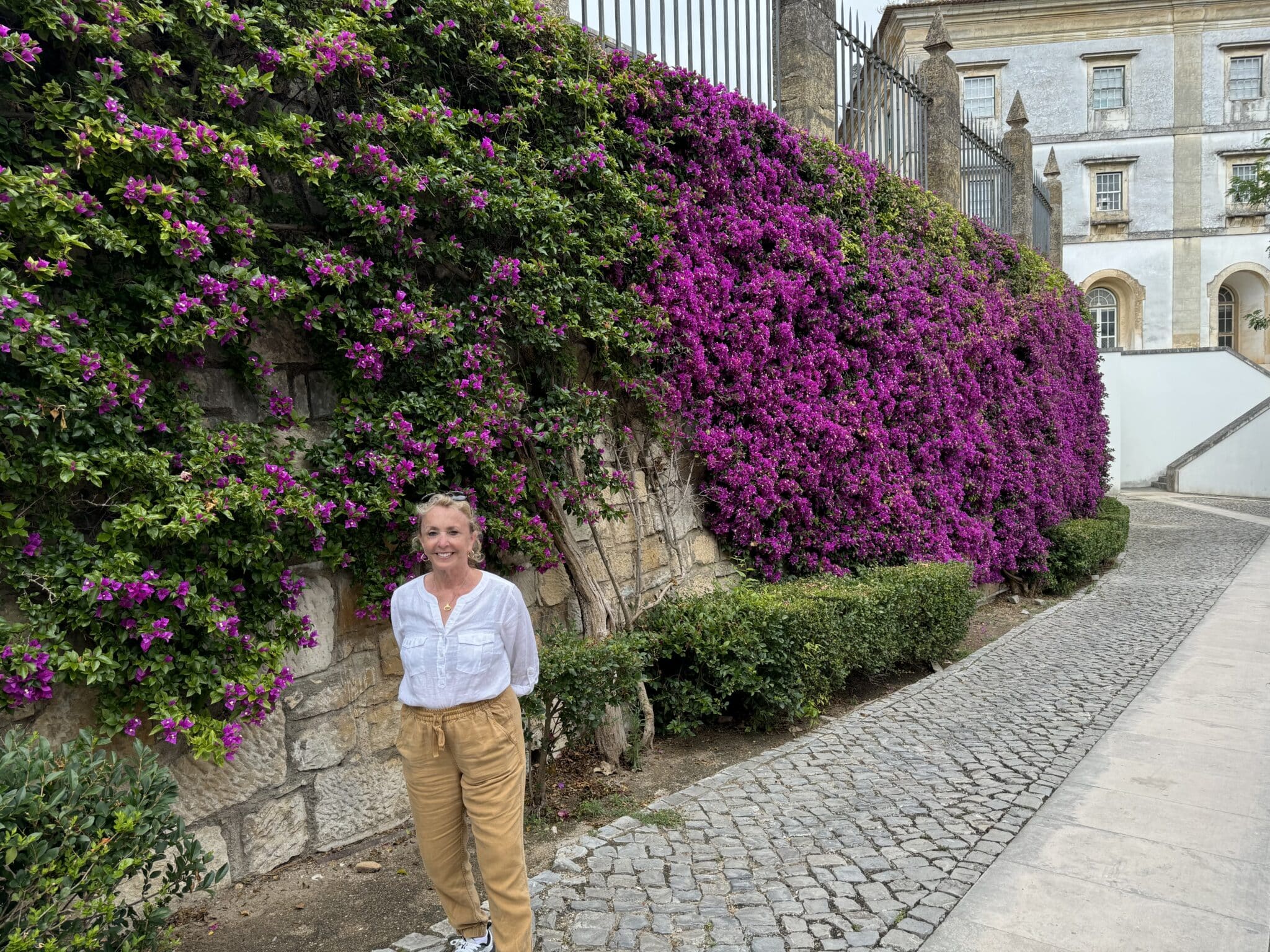
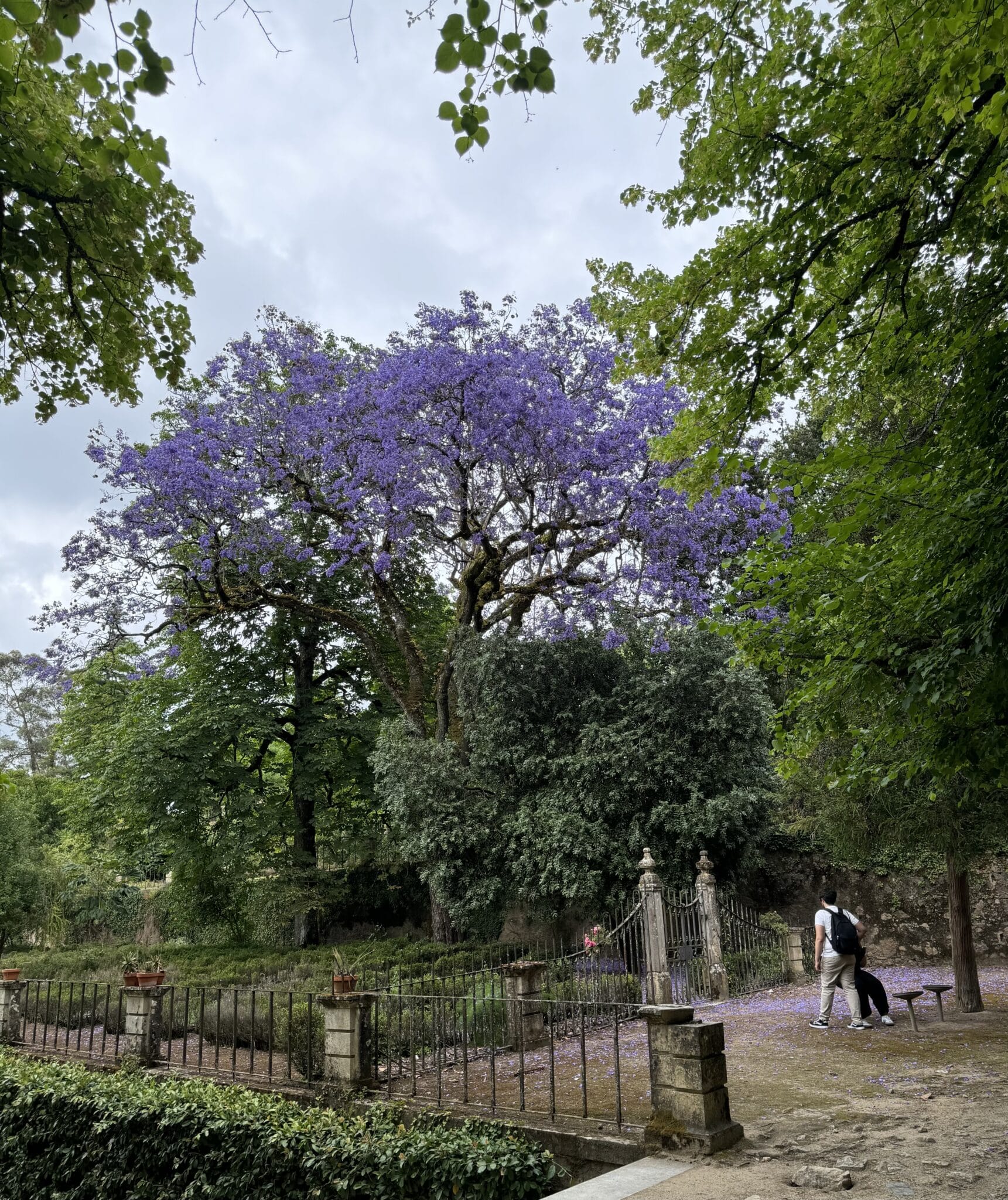
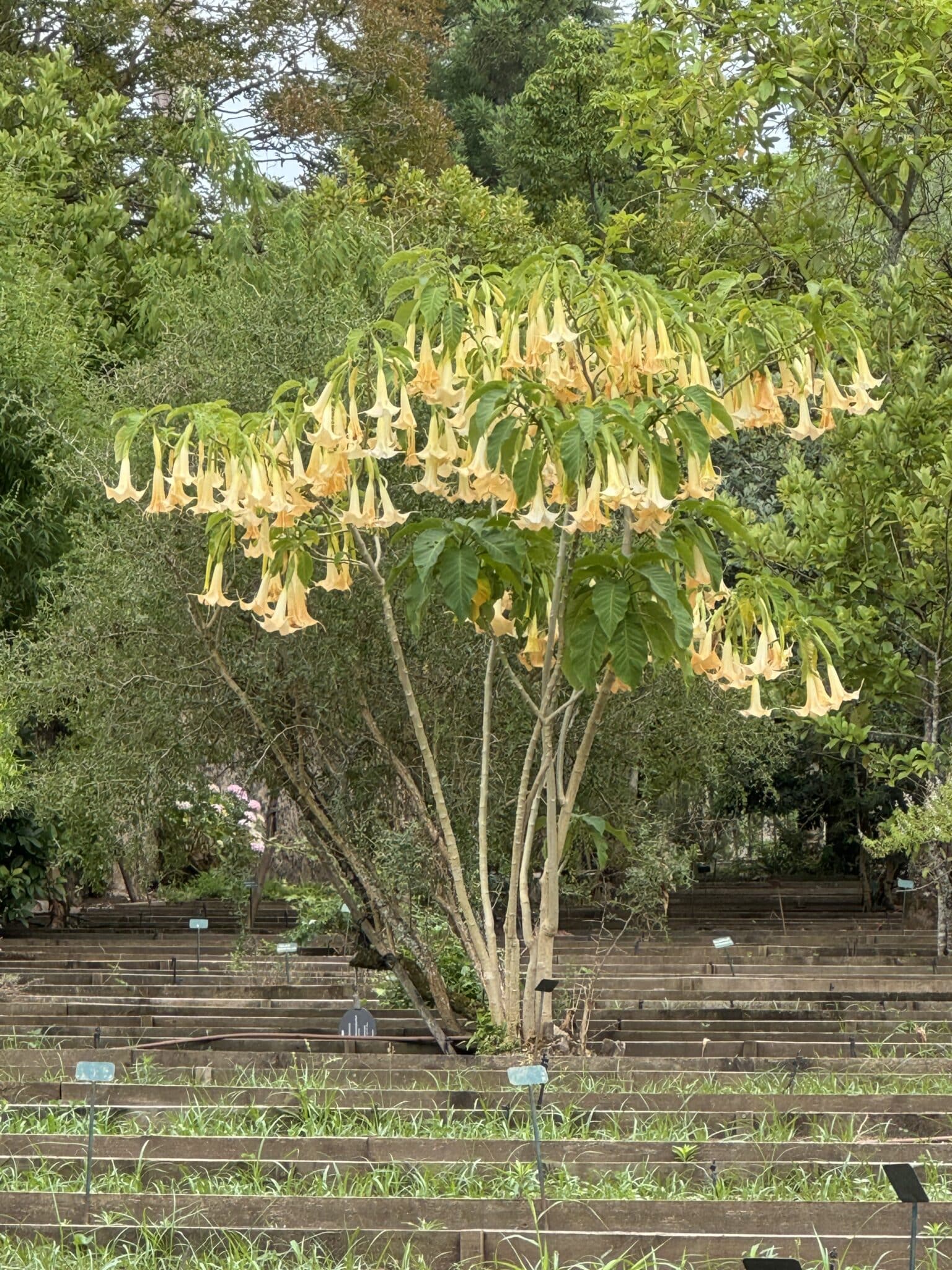
The botanical garden in this City of Knowledge reminded us that such gardens were created so that scientists could study the medicinal properties and benefits of herbs, plants and trees. The Orto Botanica of Padua University in Italy was the first in 1545.
In the Coimbra University botanical garden we found labels on some plants that described their medical use.
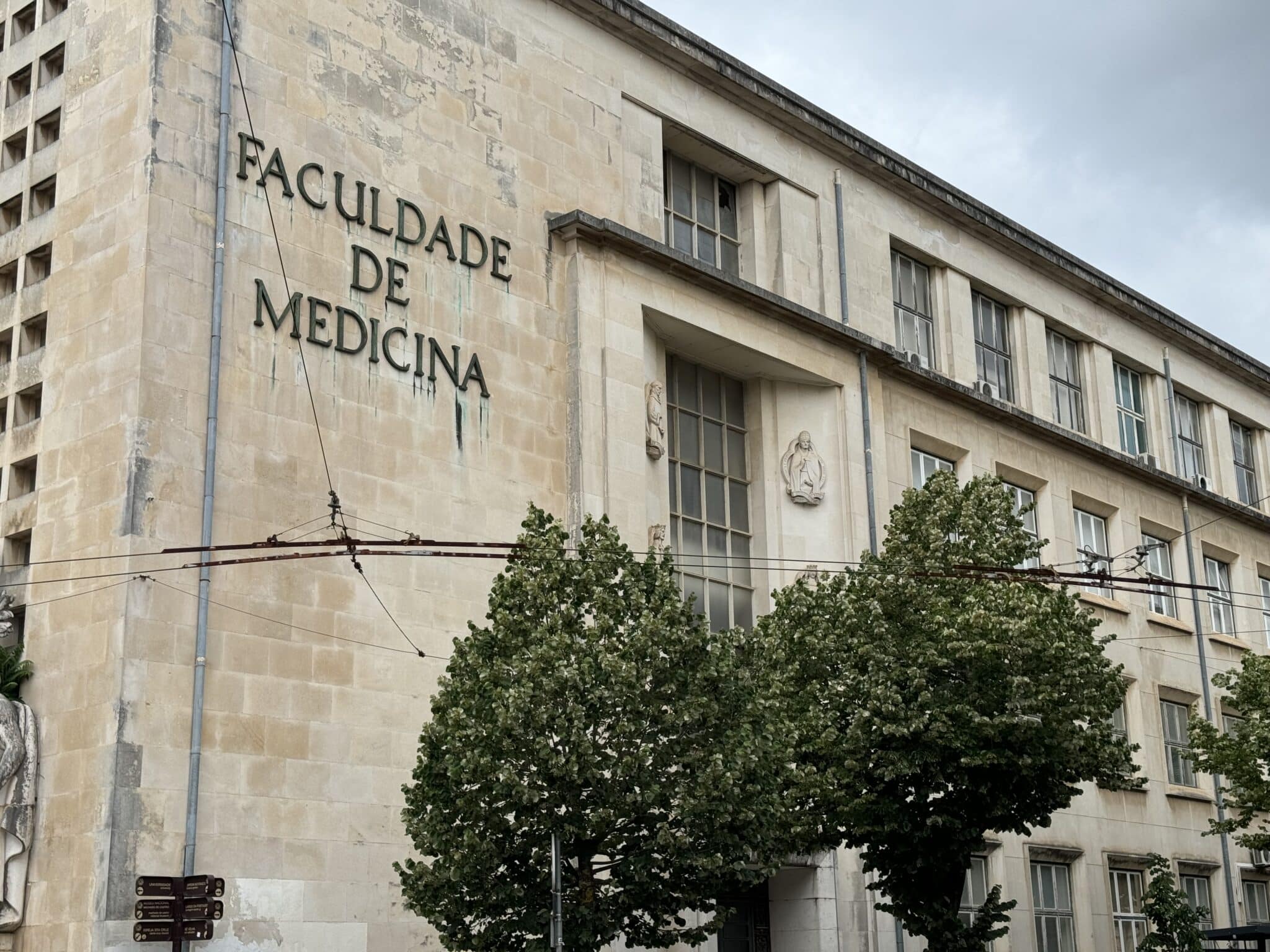
An academic building at the University of Coimbra.
The campus seemed empty in the summer.
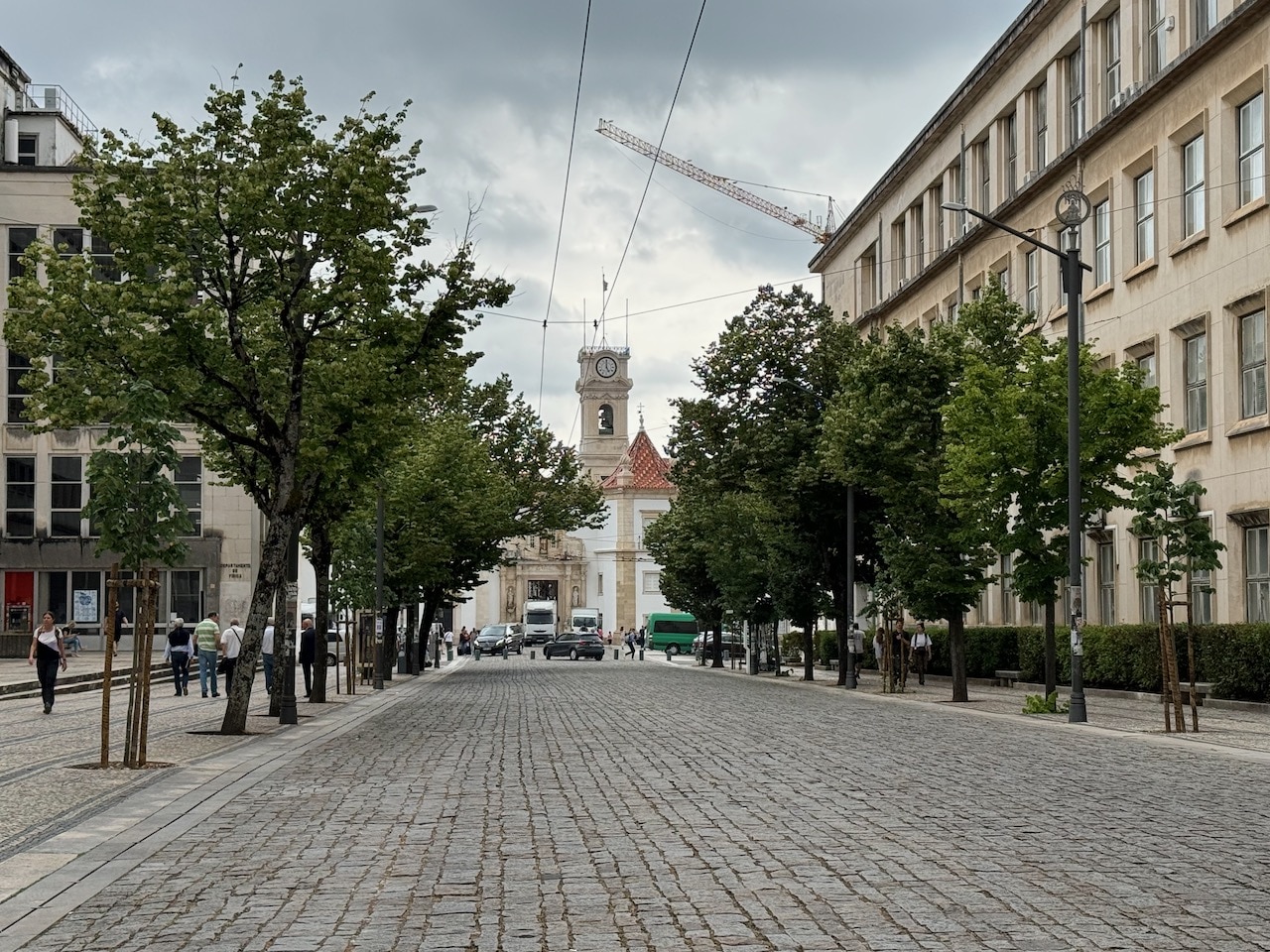
But there was plenty of evidence of the issue gripping campuses on both sides of the Atlantic. The scattered pup tents, in a pro-Palestinian encampment pitched beside one building, looked exactly like the ones we’d seen at Columbia University, the City College of New York and NYU, and on campuses nationwide.
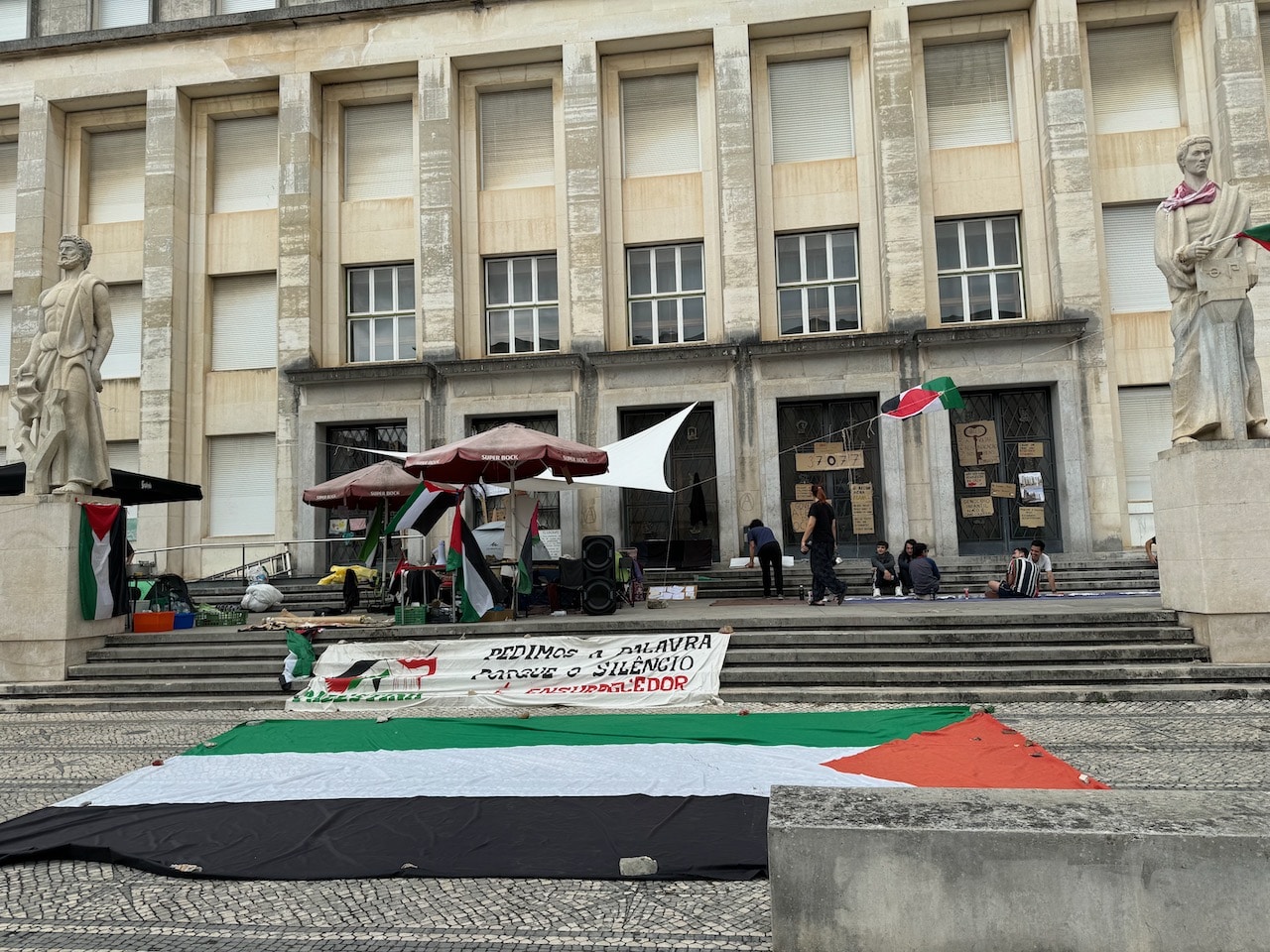
That night we ate at a lovely restaurant a ten-minute walk downhill from our hotel. The Solar do Bacalhau specializes in salted cod, thus its name. It’s in Baixa de Coimbra, an old section thriving with merchants and craftspeople since the Middle Ages. The food and wine were special.
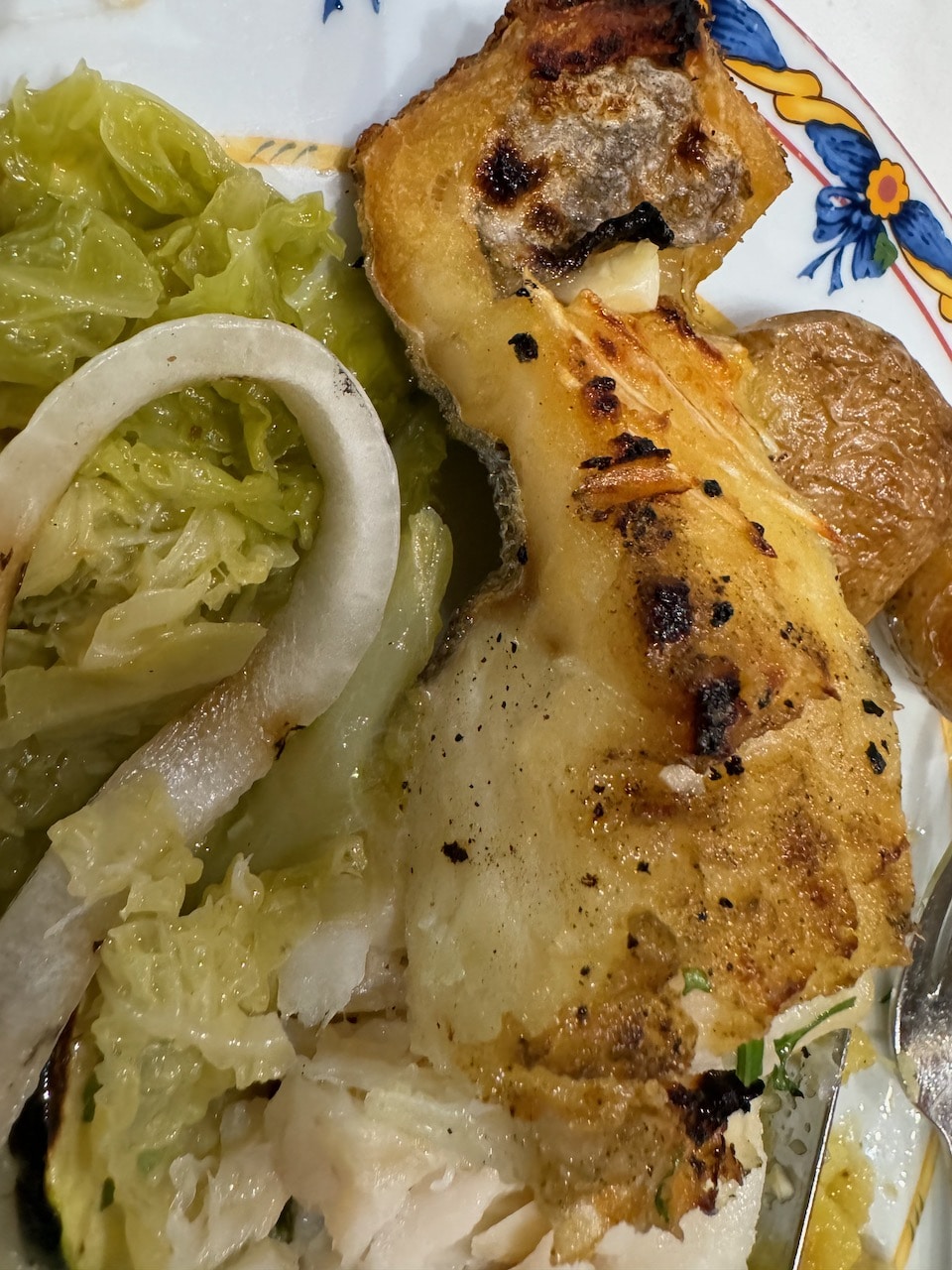
But chocolate freak that Nick is, he couldn’t resist his dessert.
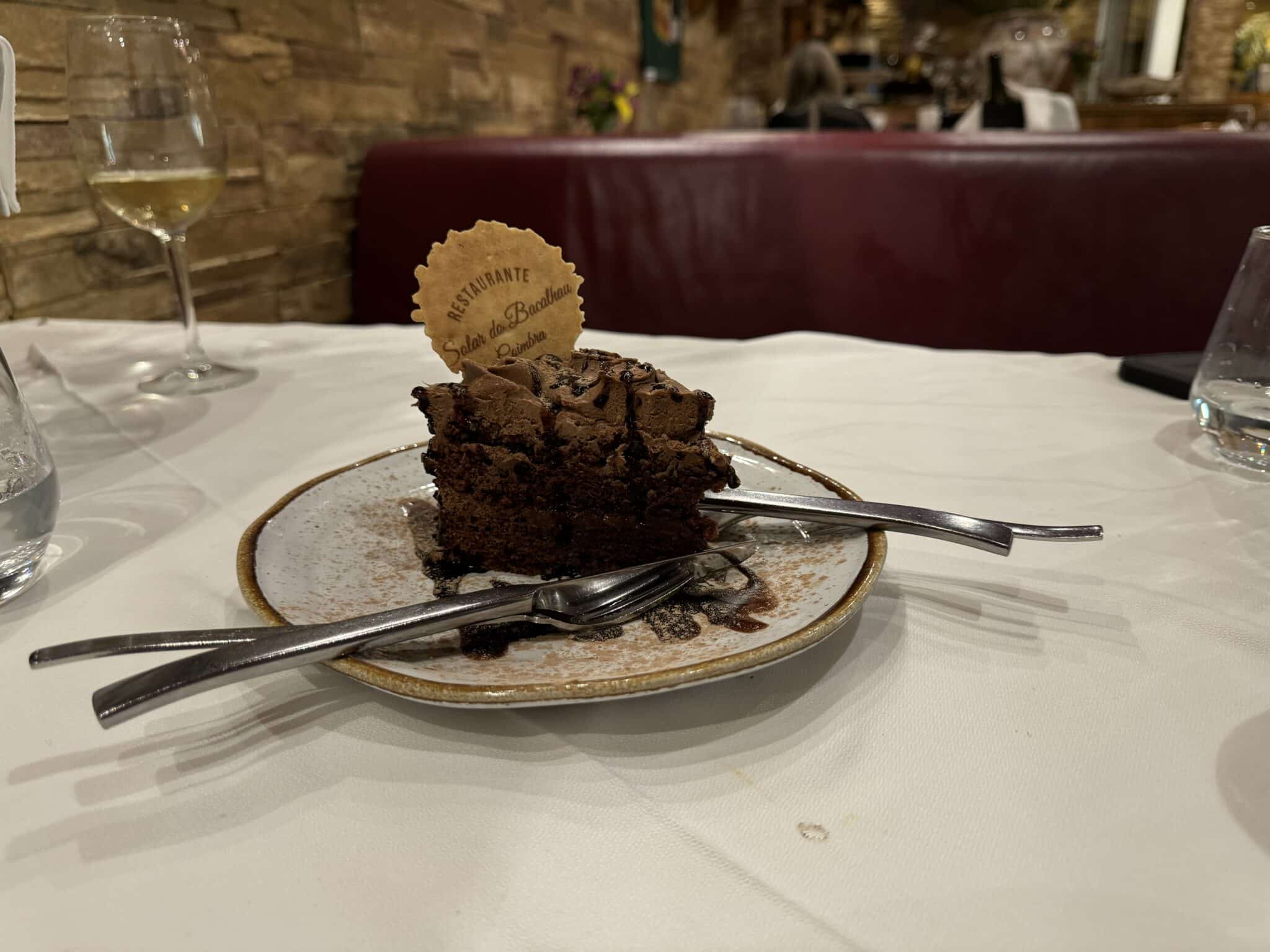
Back at the Sapientia Boutique Hotel, we stepped onto its terrace for a nighttime view across tiled rooftops down to the Mondego River.
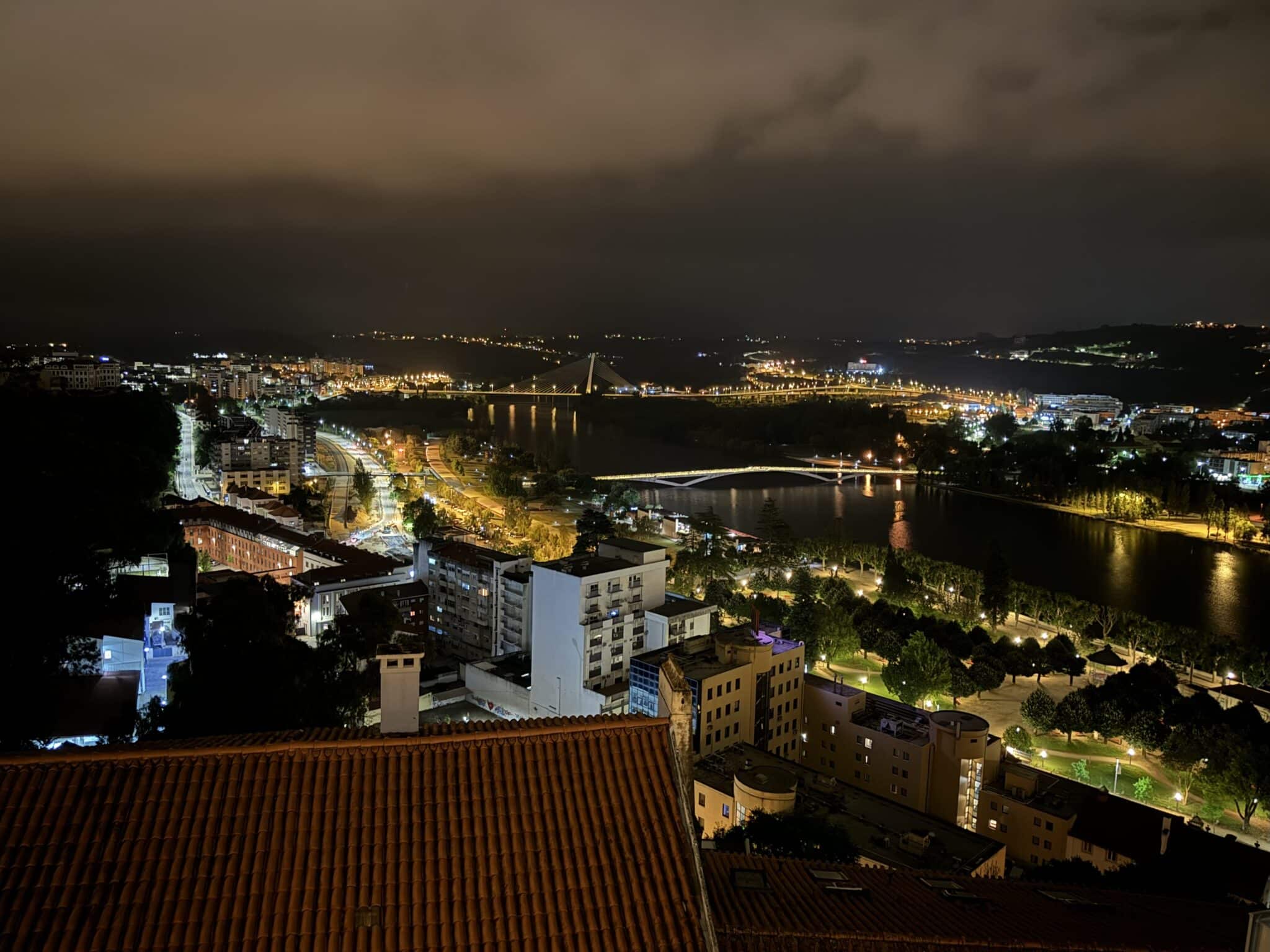
The next morning, we took one last picture, said goodbye to the City of Knowledge, and headed to Lisbon for a final day.
